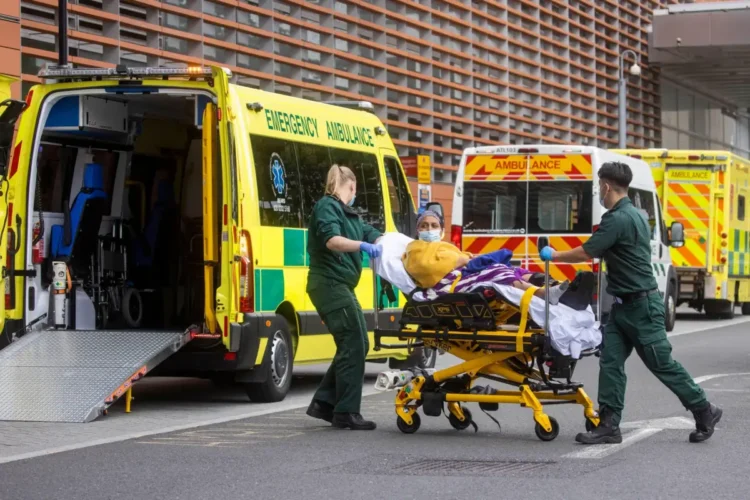By Charlotte Webster-
UK health officials have begun another scare that the number of patients hospitalised with Covid are on the increase.
official statistics about patients hospitalised due to Covid has lost credibility after it emerged during last year’s pandemic that several hospitals had numbered many of those who had tested positive for the virus but been admitted to hospital for other reasons besides covid-19.
Testing in hospitals during the pandemic were a matter of standard procedure, but officials then added them to statistic of those who had been admitted to hospital for covid-19.
One other problem with hospitalisation statistics is that they fail to properly take into account exactly how serious the patient’s pre-existing illnesses (known as comorbidities) were before arrived at hospital. That information helps the public gauge exactly how ill patients were as a whole before contracting Covid, and most importantly, whether they are primarily in hospital because of their other illness but happen to have covid as well. it is well known that many people in the public had covid who were asymptomatic, and not even aware they had the virus unless they got tested.
Now, officials say there were 9,631 people in hospital with coronavirus as of 8am on 5 October – a 37% increase on last week’s 7,024.-the highest figure since 3 August.
The COVID-19 hospital admission rate in England is now 10.8 per 100,000 people – up from 7.5 the previous week.
The most cases were those within the age bracket of 85 or over – the figure being 132.3 per 100,000 people, according to the statistics.
Covid hospitalisations are reportedly on the rise in Swindon with 44 Covid-positive patients admitted to Salisbury District Hospital, an increase of 266.7 per cent on the previous week and 56 patients at Great Western Hospital in Swindon, a difference of 7.7 per cent.
However, Swindon has seen an increase in Covid testing by 155.3 per cent in the week leading up to October 5, with over 3,300 tests administered and the number of new confirmed cases in the area has risen by 33.3 per cent.
Despite exaggerated levels of Covid hospitalisations, the virus is real and not to be taken lightly as though it does not exist.
The Uk government has withdrawn its supply of free testing for the virus since last year.
Officials have warned of a “twindemic” of COVID and flu this winter, the UK Health Security Agency (UKHSA)’s weekly surveillance report still showed “low levels” of influenza activity.
According to his ZOE Health symptom-tracking app, Professor Tim Spector said common colds are rising faster than COVID cases.
Commenting on the latest figures, Dr Susan Hopkins, chief medical advisor at UKHSA, said: “This week’s data shows concerning further increases in COVID-19 cases and hospitalisation rates, which are now at their highest level in months.
“Outbreaks in hospitals and care homes are also on the rise.”
Ms Hopkins warned people with any symptoms of a respiratory virus to stay away from the elderly and vulnerable.
COVID hospital admissions increased in all English regions in the past week – with three out of nine almost back to levels seen during the July peak – when the BA.4 and BA.5 Omicron subvariants surged.
In the South West, there were 1,003 patients in hospitals with coronavirus – nearly as many as the 1,229 at the summer peak.
The South East of England had 1,553 patients in hospital with COVID – compared to 1,985 at the summer peak.
And the East of England had 1,064 – not far off the 1,432 seen in July.
Although regular testing has been wound down, the latest ONS surveillance report suggests cases are rising again in the community.
As of 17 September, 857,400 people had COVID outside of a hospital or care home – one in 65 – up from one in 70 the previous week.
In the same week last year, COVID cases were decreasing – while during the same period in 2020 – cases were increasing nationally, suggesting it is too early to detect a seasonal trend.
Vulnerable groups, health and social care workers and everyone over 65 is now eligible for another booster jab.
The new bivalent vaccine protects against the original Wuhan strain and the Omicron variant.




